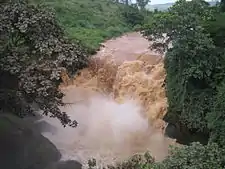Portal:Tanzania
 Tanzania Portal The Tanzania Portal
Tanzania (/ˌtænzəˈniːə/ TAN-zay-NEE-uh; Swahili: [tanzaˈni.a]), officially the United Republic of Tanzania (Swahili: Jamhuri ya Muungano wa Tanzania), is a country in East Africa within the African Great Lakes region. It borders Uganda to the north; Kenya to the northeast; the Indian Ocean to the east; Mozambique and Malawi to the south; Zambia to the southwest; and Rwanda, Burundi, and the Democratic Republic of the Congo to the west. Mount Kilimanjaro, Africa's highest mountain, is in northeastern Tanzania. According to the 2022 national census, Tanzania has a population of nearly 62 million, making it the most populous country located entirely south of the equator. Many important hominid fossils have been found in Tanzania, such as 6-million-year-old Pliocene hominid fossils. The genus Australopithecus ranged across Africa between 4 and 2 million years ago, and the oldest remains of the genus Homo are found near Lake Olduvai. Following the rise of Homo erectus 1.8 million years ago, humanity spread all over the Old World, and later in the New World and Australia under the species Homo sapiens. H. sapiens also overtook Africa and absorbed the older species of humanity. Later in the Stone and Bronze Age, prehistoric migrations into Tanzania included Southern Cushitic speakers who moved south from present-day Ethiopia; Eastern Cushitic people who moved into Tanzania from north of Lake Turkana about 2,000 and 4,000 years ago; and the Southern Nilotes, including the Datoog, who originated from the present-day South Sudan–Ethiopia border region between 2,900 and 2,400 years ago. These movements took place at about the same time as the settlement of the Mashariki Bantu from West Africa in the Lake Victoria and Lake Tanganyika areas. They subsequently migrated across the rest of Tanzania between 2,300 and 1,700 years ago. Tanzania's population is composed of about 120 ethnic, linguistic, and religious groups. Christianity is the largest religion in Tanzania, with substantial Muslim and Animist minorities. Over 100 different languages are spoken in Tanzania, making it the most linguistically diverse country in East Africa; the country does not have a de jure official language, although the national language is Swahili which is used in parliamentary debate, in the lower courts, and as a medium of instruction in primary school, spoken by up to 90% as a second language. English is used in foreign trade, in diplomacy, in higher courts, and as a medium of instruction in secondary and higher education, while Arabic is spoken in Zanzibar. Tanzania is mountainous and densely forested in the north-east, where Mount Kilimanjaro is located. Three of Africa's Great Lakes are partly within Tanzania. To the north and west lie Lake Victoria, Africa's largest lake, and Lake Tanganyika, the continent's deepest lake, known for its unique species of fish. To the south lies Lake Malawi. The eastern shore is hot and humid, with the Zanzibar Archipelago just offshore. The Menai Bay Conservation Area is Zanzibar's largest marine protected area. The Kalambo Falls, located on the Kalambo River at the Zambian border, is the second-highest uninterrupted waterfall in Africa. Tanzania is one of the most visited tourist destinations for safaris. Selected article -The Zanzibar Revolution (Arabic: ثورة زنجبار, romanized: Thawrat Zanjibār) occurred in January 1964 and led to the overthrow of the Sultan of Zanzibar and his mainly Arab government by the island's majority Black African population. Zanzibar was an ethnically diverse state consisting of a number of islands off the east coast of Tanganyika. It had become fully independent in 1963, with responsibility for its own defence and foreign affairs, as a result of Britain giving up its protectorate over it. In a series of parliamentary elections preceding this change, the Arab minority succeeded in retaining the hold on power it had inherited from Zanzibar's former existence as an overseas territory of Oman. (Full article...)General images -The following are images from various Tanzania-related articles on Wikipedia.
This month in Tanzanian history
Wildlife of Tanzania -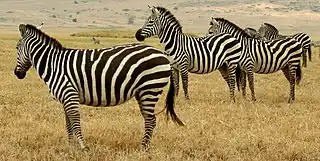 Zebra Credit: Gaurav-P
Zebras are African equids best known for their distinctive white and black stripes. Their stripes come in different patterns unique to each individual. They are generally social animals and can be seen in small harems to large herds. In addition to their stripes, zebras have erect, mohawk-like manes. Unlike their closest relatives, horses and asses, zebras have never been truly domesticated. Did you know ...
CategoriesCategory puzzle Select [►] to view subcategories
Tanzania Tanzania-related lists Buildings and structures in Tanzania Cemeteries of Tanzania Tanzanian culture Economy of Tanzania Education in Tanzania Environment of Tanzania Geography of Tanzania Government of Tanzania Health in Tanzania History of Tanzania Images of Tanzania Labor disputes in Tanzania Organisations based in Tanzania Tanzanian people Politics of Tanzania Society of Tanzania Tanzania stubs WikiProjects
Recognised contentFeatured Articles:
Featured Lists:
Good Articles:
Selected panorama -Morogoro is a city with an urban population of 206,868 (2002 census) in the southern highlands of Tanzania, 190 km west of Dar es Salaam. It is the capital of the Morogoro Region. It is also known informally as "Mji kasoro bahari," which translates as 'city short of an ocean/port'.
Uganda–Tanzania War -Articles here focus upon aspects of the Uganda–Tanzania War. These are all Good articles that meet a core set of high editorial standards.
The Battle of Mutukula (Kiswahili: Mapigano ya Mutukula) took place from 21 to 22 January 1979 near and in the town of Mutukula, Uganda, during the Uganda–Tanzania War. After repulsing a Ugandan invasion of the Kagera Salient in 1978, Tanzanian commanders feared that Ugandan forces stationed upon the high ground in Mutukula, a town located along the Tanzania–Uganda border, still posed a threat to their territory. On the night of 21 January 1979 the Tanzanian 208th Brigade crossed the border and surrounded the town. The following morning it attacked, and the Ugandan garrison—including the Gondo and Suicide Battalions—fled. Afterwards the Tanzanians razed the locale in revenge for the damage wrought by the Ugandans in Kagera. (Full article...) TopicsSelected picture -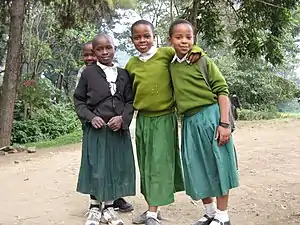 Children in Arusha Credit: Fanny Schertzer
School children in Arusha, Tanzania. There are four schools in and around Arusha. One, the School of St Jude, provides free education to children from poor local families. Related portalsThings you can do
Associated WikimediaThe following Wikimedia Foundation sister projects provide more on this subject:
Discover Wikipedia using portals
| |||||
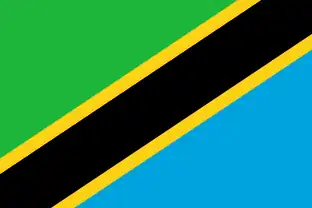

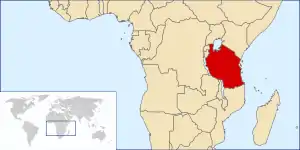
.svg.png.webp)

.jpg.webp)
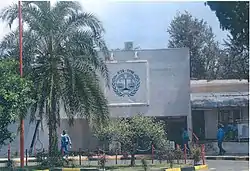










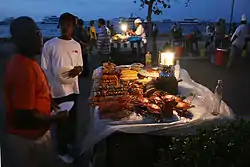
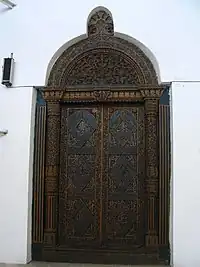

_sv.svg.png.webp)



.svg.png.webp)


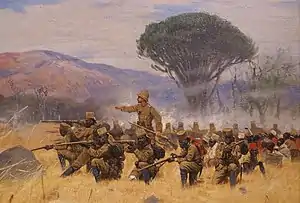

_and_her_husband_Louis_Seymour_Bazett_Leakey_(1903-1972).jpg.webp)


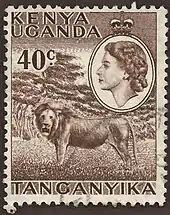
.svg.png.webp)






_in_Southern_Africa_per_million_inhabitants%252C_2013_or_closest_year.svg.png.webp)
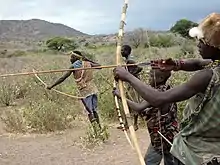

.jpg.webp)


